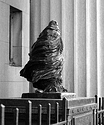Ian Grant
Subscriber
I don't want to throw a spanner in the works but has anyone here seen or used Ilfords colour transparency film which is 2iso, it is based on the same technology as Ilfochrome? if i were to attempt to make any colour film (WHICH I AM NOT) I would first strive to make this type of colour film. Just throwing it out there......
I have some exposed Ilfochrome colour transparencey film, it's E6 process and 100 ASA. The reusew of names gets confusing but I realise you mean the Ciba/Ilford Ilfachrome in this case. I think the speed would make it rather impractical.
It's worth reading D A Spencers book - Colour Photography in Practice, 1939, it's a very interesting analysis of (early) Colour photography and differing approaches, Later editions aren't as interesting as by then many processes were obsolete and so no longer included. D.A. Specer was a senior research chemist and a Director of Kodak and so in a unique position.
Ian





